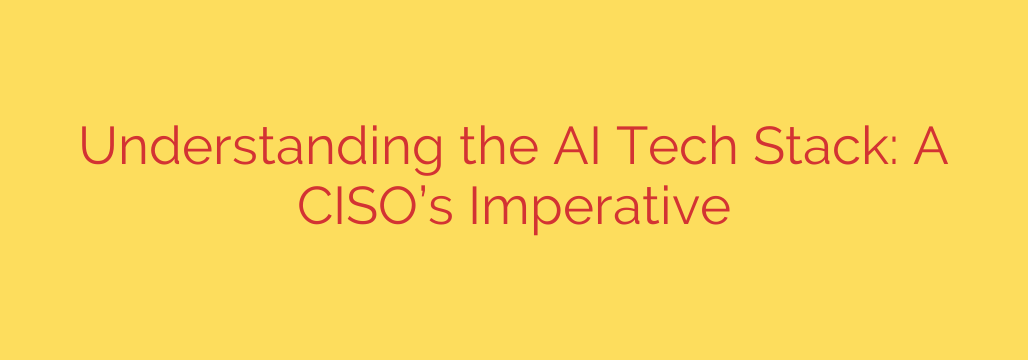
Understanding the AI technology stack is no longer optional for security leaders; it is a fundamental requirement for protecting modern organizations. As artificial intelligence rapidly integrates into business operations, it introduces complex security challenges that span multiple layers of technology. A comprehensive understanding of this stack is essential for identifying vulnerabilities, assessing risks, and implementing effective cybersecurity measures.
The AI tech stack can be viewed as a series of interconnected components necessary to build, deploy, and manage AI systems. At its foundation is the data layer, encompassing data collection, storage, processing, and governance. Securing this layer is paramount, involving robust controls around data privacy, integrity, access management, and compliance with regulations. Breaches or manipulation at this stage can severely compromise the reliability and trustworthiness of AI models.
Above the data layer sits the model development and training layer. This involves the use of machine learning frameworks, algorithms, and computational resources to build AI models. Security concerns here include protecting intellectual property (the model itself), preventing model poisoning through malicious data injection, ensuring the security of development environments, and managing secrets used during training. Supply chain security for AI libraries and frameworks is also a critical consideration.
The model deployment and serving layer deals with making trained models accessible, often through APIs or integrated into applications. This layer introduces infrastructure security challenges, whether on-premises, in the cloud, or at the edge. Ensuring secure endpoints, robust authentication and authorization for API access, and continuous monitoring of deployment environments are vital to prevent unauthorized use or breaches.
Overlaying these technical layers is the crucial domain of MLOps (Machine Learning Operations). MLOps provides the tools and processes to manage the AI lifecycle, from experimentation and training to deployment, monitoring, and updates. Securing the MLOps pipeline itself is critical. This involves secure configuration management, version control security, automated security testing within CI/CD pipelines, and ensuring the integrity of model updates. A compromised MLOps pipeline can lead to the deployment of vulnerable or malicious models.
For CISOs, understanding each of these layers is an imperative. It requires collaboration with data science, engineering, and IT teams. Security strategies must evolve to address AI-specific threats such as adversarial attacks, data leakage through model outputs, and model theft. Implementing appropriate security controls at each stage of the AI lifecycle, establishing clear data governance policies specifically for AI data, and integrating AI workload monitoring into existing security operations are key steps. Proactive risk assessment and building security expertise within the team regarding AI technologies are indispensable for navigating this evolving landscape and safeguarding the organization’s AI assets and the data they process.
Source: https://www.helpnetsecurity.com/2025/06/16/ciso-ai-tech-stack/








